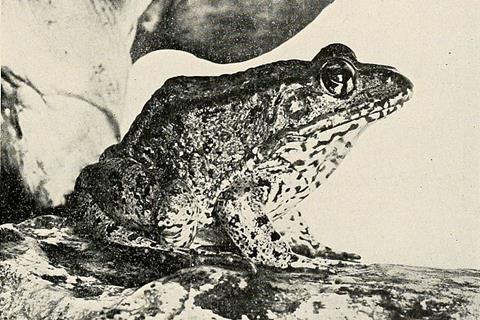University of Central Florida researchers have found that an understudied, deadly disease of frogs is more widespread in Central Florida than previously thought and may become more of a problem in other parts of the U.S. due to climate change.

The findings, recently published in the Journal of Animal Ecology, showed that the pathogen amphibian Perkinsea infected a third of frogs sampled, and its presence was associated with the cooler, wetter conditions typical of a Florida winter.
PROMOTED: AMI has teamed up with QIAGEN to help you get the highest yields from your DNA Extractions. Get your free guide here.
Florida gopher frogs, which live in gopher tortoise burrows, had the highest disease prevalence and intensity, which the researchers say is concerning as the threatened species is declining in most of its range.
Protist pathogen
Perkinsea is part of a unique group of organisms known as protists that don’t fit easily into the categories of plant, animal or fungi. When Perkinsea spores enter a frog, they find their way to the liver and other organs and eat the tissue from the inside out, leading to death.
“We have this pathogen that we basically know nothing about, and this is the first real stab at trying to understand where it’s showing up and why,” says Matthew Atkinson, a lecturer in UCF’s Department of Biology and the study’s lead author — which he completed during his time as a doctoral student in the same department.
“And we can’t do anything for protecting species unless we know what’s actually happening in the first place. So that’s been a big focus with us.”
Indicator species
Frogs are a crucial part of many ecosystem food webs and are also considered indicator species, since their sensitivity to environmental changes and pollution can serve as early warning signs of ecosystem disruption.
As northern regions become warmer from climate change, more areas could experience conditions favorable to Perkinsea infections in frogs, the researchers say.
“We observed this really strong relationship between average temperature, where the lower the average temperature, the more infections we saw,” Atkinsons says. “So that’s the middle of December in Florida where the average temperature is 65-70 degrees Fahrenheit, but that could be representative of what winters will look like in other parts of the U.S. after climate change.”
Ebola of frogs
Heavy precipitation, such as that from Hurricane Irma in 2017, was also associated with the disease as was the presence of another deadly frog disease, Ranavirus, which is known as the Ebola of frogs.
Findings from this new research can help with conservation efforts moving forward, says Anna Savage, study senior author and an associate professor in UCF’s Department of Biology.
“While this is only a starting point for managing and protecting species, it tells us where and when to focus, so that in the future we could do things like avoid releasing head-started frogs of threatened and managed species into the wild at times of year when they are more likely to suffer from disease,” Savage says. “Gopher frogs are the most threatened and most susceptible species we know of to date, so those are the species that could benefit the most.”
Sampling frogs
For the study, the researchers sampled more than 1200 frogs from 20 wetland locations across the Central Florida peninsula from August 2017-19. Data collected during sampling included average pH, presence of standing water, number of frog species, and fish and crayfish prevalence. Average temperature and precipitation for locations was obtained from a world climate database.
Their sampling methods were non-destructive, as only a small sample of tissue from the toe or tail was removed.
In the lab, the researchers extracted DNA from their samples using a Quantitative Polymerase Chain Reaction, or qPCR, protocol developed at UCF. The innovative method allows for researchers to quantify pathogen presence and intensity without euthanasia.
Help protect frogs
Savage has several suggestions for what people can do to help protect frogs.
“One thing that everyone can do is be careful not to spread animals and pathogens around,” she says. “If you like to boat, fish or hike, be aware that all of the major frog diseases can survive on your nets, shoes and boots for days, and you could be spreading spores from one location to the next if you don’t decontaminate your gear in between sites.
”All it takes is rinsing things in a weak solution of household bleach or leaving items out to dry in the sun for at least a few days before traveling somewhere new.”
“You can also write to your local representatives and let them know that conserving natural areas and preventing more development of state lands is the main thing that is causing species to decline,” she says. “Diseases are a major problem, but losing habitat and connectivity among frog populations is an even bigger problem that, when combined with disease, can cause us to lose populations entirely.”







No comments yet